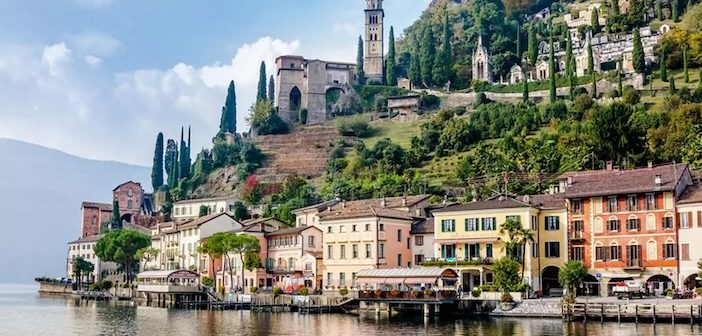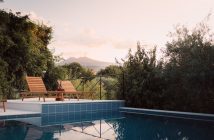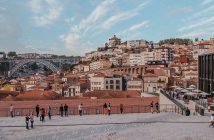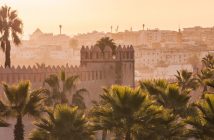It was on a trip to Sicily where I first encountered the concept of aufguss – a sauna ritual that involves a host of sorts wafting hot towels over and above participating wellness seekers to increase airflow and enhance the multi-sensory therapeutic effect. When I first did this it was a ‘bathing suit off’-type experience – although we were still wrapped in towels – as serious heat encouraged beads of sweat to dribble down our faces and pool beneath our feet. With a view out on to the Mediterranean sea we exited the sauna suitably cleansed in mind, body and soul – and wondering who on earth had invented such a thing.
On the shores of similarly azure waters, this time belonging to Lake Maggiore, as far north as the Italian-speaking map will take you from these most southerly horizons, I was recently party to another sauna expedition. This time, it was at the Termali Salini and Spa in Locarno, in the Ticino region of Switzerland. Here, day trippers can take advantage of the outdoor infinity pool with mountain vistas that looked like they’d been engineered in ‘green screen’, to sit under blasting jets of water to dissipate shoulder knots, and relax in the trio of bubbling hot tubs that fall like an architectural cascade within the building’s interior.
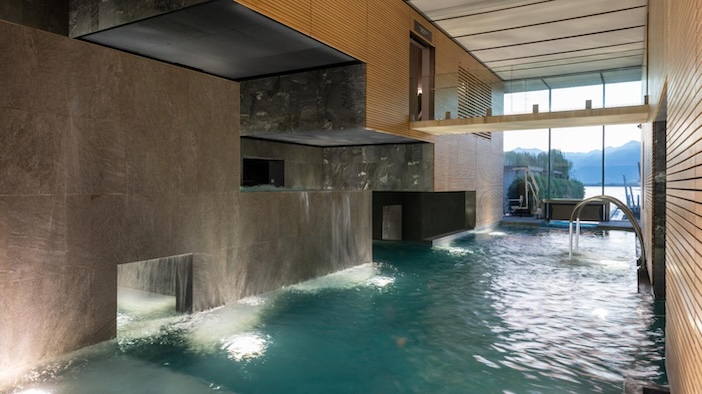
Here, too, for no extra fee on top of the standard entrance, you can take part in one of the additional rituals that includes this aforementioned aufguss, a turkish bath scrub or peeling, ‘power infusion’, or ‘smoke-ritual’. The latter involves a lady with a giant fan wafting scented candles and their chosen aromas throughout the sauna, and giant rose crystals strategically hiding beneath the five or so wooden benches on each side. This was also advertised as a ‘senza costume’ experience, the key difference being that all coverage was omitted; attendees simply sat in their birthday suits. Even for an open-minded millennial Brit, visiting ‘seemingly strict’ Switzerland, this was a lot to take in on any given Tuesday.
It is with this somewhat unexpected liberal stroke, however, that this part of Switzerland comes alive. Since 1946 Locarno has been hosting its world-famous film festival every August, gathering global talent to award the very best of all things artistic when it comes to the silver screen, and this year our very own Emma Thompson is set to receive the coveted Leopard Award – one that is given to a specific individual whose work in the film industry ‘has left its mark on the collective imagination’.
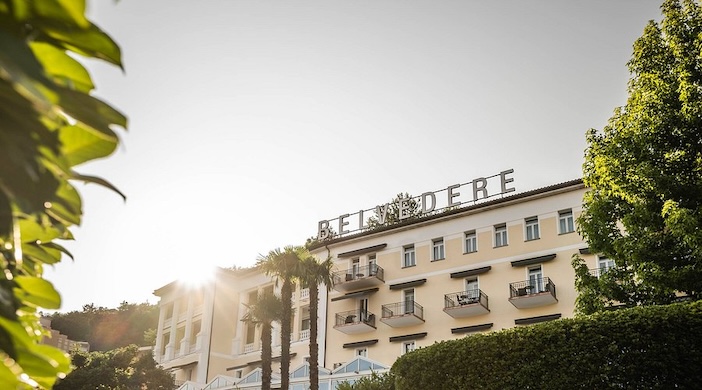
While I am are here I’m lodged at the Hotel Belvedere, home to another alfresco spa, and frequent host to some of the visiting stars of the film festival, but also to a beautiful collection of original early 20th century French and Swiss artworks throughout the hotel. Outside my room, in fact, is an oil by Albert Müller, Grande Paessaggio Ticinese, painted in 1925, of similar composition to the grand panorama from my bedroom window.
Müller is also one of the regional personas of note, featured in the MASI (Museo d’Arte della Svizzera Italiana) in Lugano – a mere 30 minutes away by train, on which, incidentally, all visitors with a hotel, hostel or campsite booking are entitled to a Ticino Ticket travel pass, meaning all public transport is free during your stay. And here you’ll find seasonal exhibitions from artists such as 36-year-old Luisa Gagliardi, and 88-year-old Niele Toroni, whose work I also find exhibited as part of a homage at the Museo Communale d’Arte Moderna the following day when visiting nearby Ascona.
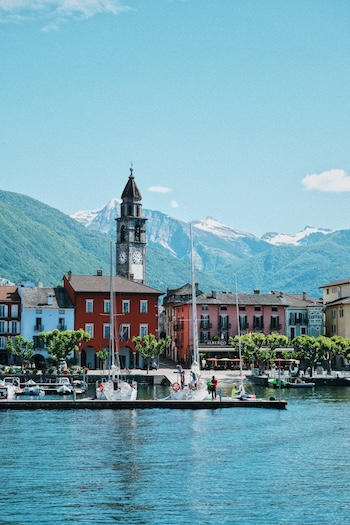
Ascona (photo by Janik Presser, courtesy of Unsplash)
If there is somewhere in Switzerland that best embodies the essence of the Italian ‘dolce vita’, it’s Ascona. Flanking the lake again, with buildings painted in the most bright and brilliant of colours, this town combines artistry with architecture, both natural and man-made. Quirky but beautiful design-led shops decorate the cobblestone streets, proffering unique pieces and quality materials. One of the town’s other draws is their free summer jazz festival, offering up to 15 concerts a day, evidence of which is brought to our attention through graffiti-meets-modern-art style motifs that decorate the sides of certain buildings throughout the town.
With artistry at the fore, I am also privy to visiting Perseo SA, a cast bronze foundry for the last 70 years, under the current creative management of Andrea Ziino, using state-of-the-art processes that entwine with centuries old techniques. We watch, jaws on the floor, as hot bronze is poured into plaster casts, the tradesmen dressed like astronauts in their protective silver suits at soaring temperatures we can’t bear to imagine. What emerges are iconic recognisable statues by Salvador Dali (they are one of only a few foundries worldwide to hold such a licence for officially approved reproductions), giant elephants, candelabras, violins and more, each one commissioned from across the globe for proud public and private display.
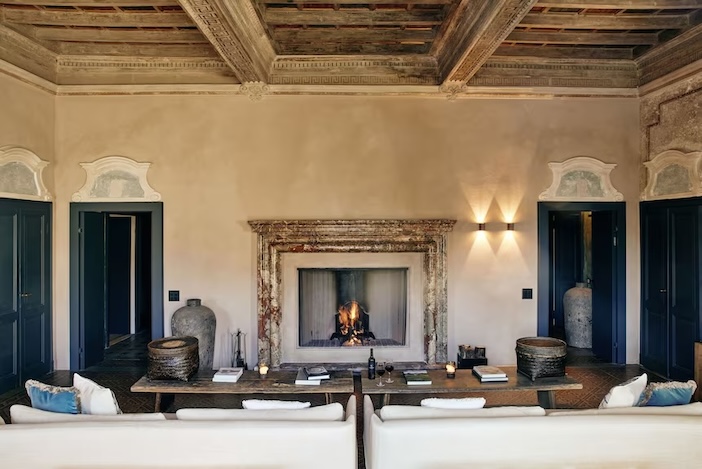
The final part of artistic life in Ticino comes from a different kind of provenance. Namely, its food and wine. If wine is science-meets-art, then Ticino has a unique offering through its destination-specific style of Merlot, while also making a white wine from the very same grape, thanks to its lakeside microclimate and limestone heavy soils. My baptism into Ticino’s wine is at the charming Relais Castello di Morcote – a 17th century villa, turned 12-bedroom boutique hotel, in one of Switzerland’s prettiest villages, with equally beautiful interiors.
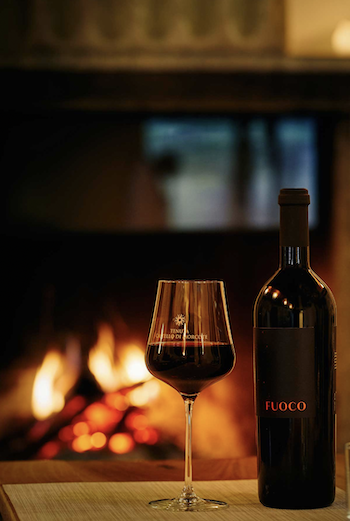 We are gifted the chance to sample wines made from the eponymous Tenuta Castello Morcote, a five-minute walk up the road, where, on an enclave that is 500m above water, against a backdrop of Italy beneath us and a 15th century castle behind us, we walk amidst the vines towards the winery where modern winemaking techniques are combined with the old – the estate Chardonnay is fermented and aged in giant amphorae. With the family owners planting and overseeing production here since 1939, on an estate formerly owned by the Duchy of Milan, the Gianinis have transformed the offering into wines of an organic and bio-dynamic persuasion.
We are gifted the chance to sample wines made from the eponymous Tenuta Castello Morcote, a five-minute walk up the road, where, on an enclave that is 500m above water, against a backdrop of Italy beneath us and a 15th century castle behind us, we walk amidst the vines towards the winery where modern winemaking techniques are combined with the old – the estate Chardonnay is fermented and aged in giant amphorae. With the family owners planting and overseeing production here since 1939, on an estate formerly owned by the Duchy of Milan, the Gianinis have transformed the offering into wines of an organic and bio-dynamic persuasion.
As if that’s not enough, three restaurants provide ample opportunity to sample the wines; the more informal Vicanaia that sits up in the hills, one at the winery (albeit mostly for weddings in the summer months), and Il Sorgente, recognised in the Michelin guide, located in the Relais under the guardianship of head chef Francesco Sangalli, member of the Slow Food Cook’s Alliance.
If there is one thing to learn about life on this Italian side of the Swiss mountains, it is that from past into present, colour, beauty and a dogged imagination thrive. You just don’t always have to be naked when trying.
For more information about Ticino, and to start planning your trip, visit the official tourism website at www.ticino.ch. For further information on the free travel pass please visit ticino.ch/ticket.
SWISS connects Switzerland with the world, offering more than 160 weekly flights from the UK to Zurich or Geneva. One-way fares start from £76 to Zurich and from £54 to Geneva, and include all taxes, fees and surcharges. More information can be found at swiss.com. For more information on Switzerland, visit switzerland.com.
Images provided from source. Header image: Relais Castello di Morcote

